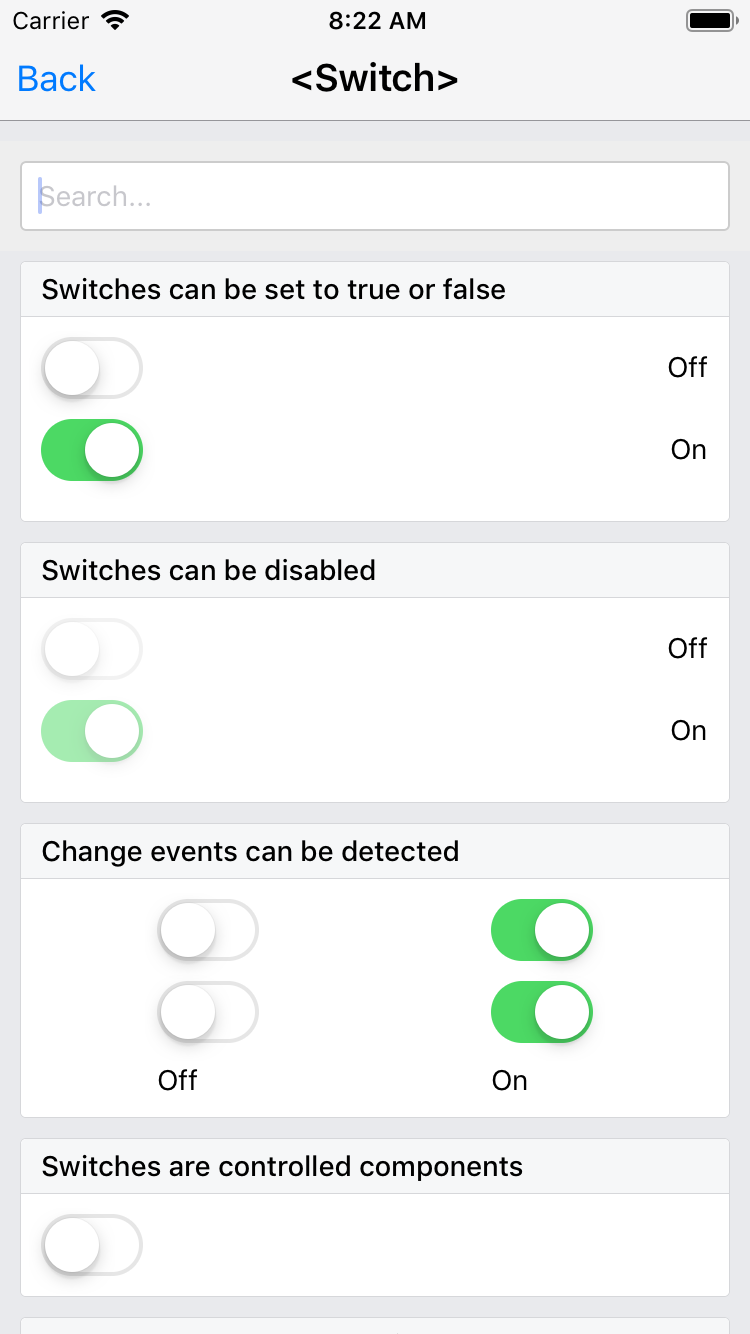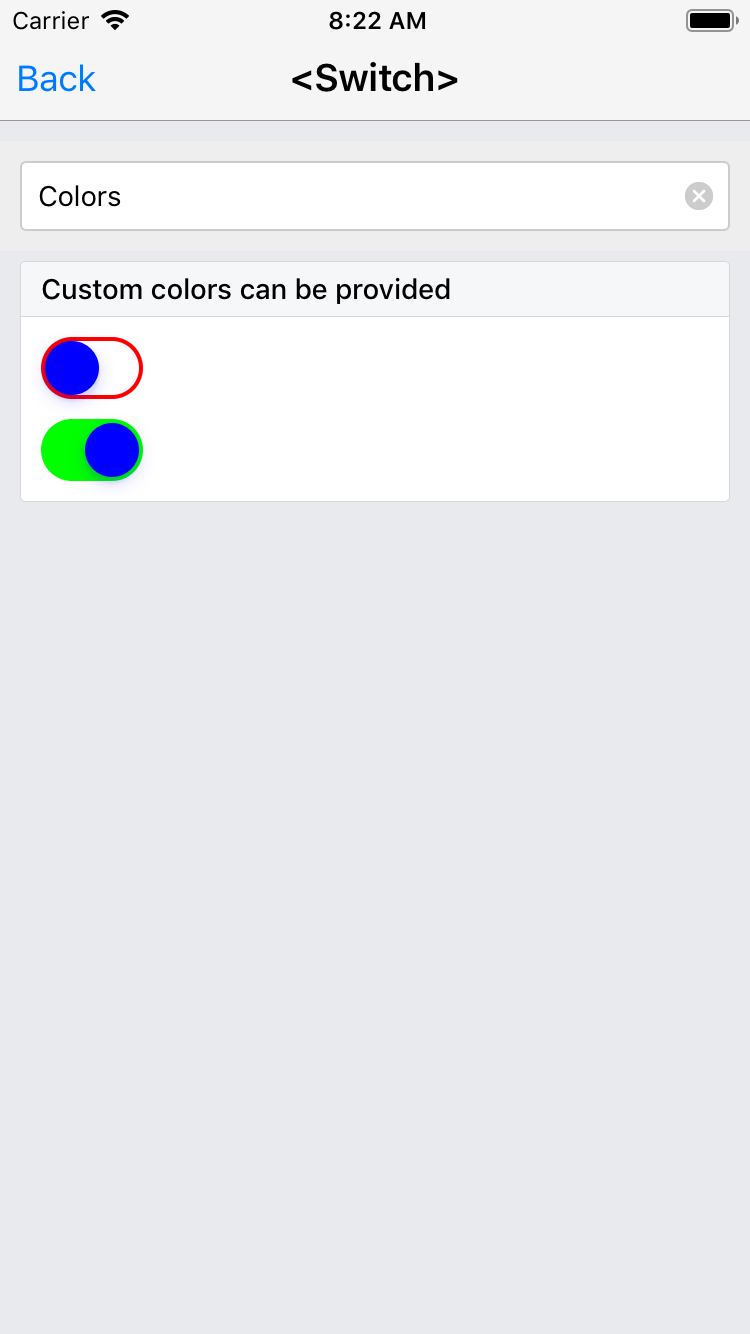Summary: This PR adds filtering functionality to individual example screens of RNTester. This is useful for Detox testing of RNTester, since Detox requires elements to be visible on the screen before they can be interacted with. Instead of needing to scroll an arbitrary amount, the test can enter the name of the example to be tested, just as is done on the main screen. This will lead to simpler and more reliable E2E tests for long example screens. This PR doesn't add any automated tests using the filter; those will be added in a separate PR. This is implemented by extracting the existing filtering functionality out of `RNTesterExampleList` into a shared `RNTesterExampleFilter` component that can be used both within `RNTesterExampleList` (the main screen) and `RNTesterExampleContainer` (the example screen).   Changelog: ---------- [General] [Added] - Added filtering to RNTester example screens Pull Request resolved: https://github.com/facebook/react-native/pull/22777 Reviewed By: TheSavior Differential Revision: D13561744 Pulled By: rickhanlonii fbshipit-source-id: cb120626a8e2b8440f88b871557c0b92fbef5edc
RNTester
The RNTester showcases React Native views and modules.
Running this app
Before running the app, make sure you ran:
git clone https://github.com/facebook/react-native.git
cd react-native
npm install
Running on iOS
Mac OS and Xcode are required.
- Open
RNTester/RNTester.xcodeprojin Xcode - Hit the Run button
See Running on device if you want to use a physical device.
Running on iOS with CocoaPods
Similar to above, you can build the app via Xcode with help of CocoaPods.
- Install CocoaPods
- Run
cd RNTester; pod install - Open the generated
RNTesterPods.xcworkspace(this is not checked in). Do not openRNTesterPods.xcodeprojdirectly.
Running on Android
You'll need to have all the prerequisites (SDK, NDK) for Building React Native installed.
Start an Android emulator (Genymotion is recommended).
cd react-native
./gradlew :RNTester:android:app:installDebug
./scripts/packager.sh
Note: Building for the first time can take a while.
Open the RNTester app in your emulator.
See Running on Device in case you want to use a physical device.
Running with Buck
Follow the same setup as running with gradle.
Install Buck from here.
Run the following commands from the react-native folder:
./gradlew :ReactAndroid:packageReactNdkLibsForBuck
buck fetch rntester
buck install -r rntester
./scripts/packager.sh
Note: The native libs are still built using gradle. Full build with buck is coming soon(tm).
Running Detox Tests on iOS
Install Detox from here.
To run the e2e tests locally, run the following commands from the react-native folder:
yarn build-ios-e2e
yarn test-ios-e2e
These are the equivalent of running:
detox build -c ios.sim.release
detox test -c ios.sim.release --cleanup
These build the app in Release mode, so the production code is bundled and included in the built app.
When developing E2E tests, you may want to run in development mode, so that changes to the production code show up immediately. To do this, run:
detox build -c ios.sim.debug
detox test -c ios.sim.debug
You will also need to have Metro Bundler running in another terminal. Note that if you've previously run the E2E tests in release mode, you may need to delete the RNTester/build folder before rerunning detox build.
Built from source
Building the app on both iOS and Android means building the React Native framework from source. This way you're running the latest native and JS code the way you see it in your clone of the github repo.
This is different from apps created using react-native init which have a dependency on a specific version of React Native JS and native code, declared in a package.json file (and build.gradle for Android apps).